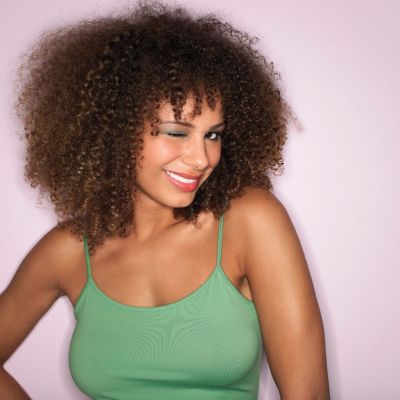
How do you determine your hair properties, the do's and don'ts!
How do you determine your hair properties, the do's and don'ts!
You're about to embrace your curls, but you don't know where to start. Then it is super useful to determine your hair properties if you would like to start your curl journey. Determining your hair properties is the starting point for getting to know your curls better and taking good care of them. It is considered an important part of the CG method.
What is the best way to test your hair properties?
This blog post discusses the following points;
- Which hair properties are most important?
- How can you test elasticity?
- How can you test porosity?
- What is meant by hydration and moisture (short explanation)?
- Conclusion
Which hair properties are most important?
Let us briefly describe what is meant by hair properties.There are 5 properties that are important:
- Porosity (how much moisture does your hair absorb and retain?)
- Elasticity (how quickly does your hair break)
- Thickness (how thick is one hair?)
- Density (how much hair do you have growing on your head?)
- Curl type (how does your hair curl? How strongly does your hair curl?)
The first two properties are the most important:
- Porosity
- Elasticity
Density and thickness are then important, as they indirectly influence product use.
The least important is really the curl type. You can check this yourself on Google. Many curly heads have multiple curl types and this is very normal.
Porosity
Porosity is about how much moisture your hair can absorb and retain. See the diagram below:

Elasticity
Elasticity is about how fragile your hair is. How quickly does your hair break off? See the diagram below:

Porosity and elasticity in a scheme:

Thickness
With thickness you can take into account the use of different products. See the diagram below:

Density and thickness in a diagram:
Density is about how many hairs grow on your scalp. See the diagram below: 
Curl type
Curl type is all about the curlier your hair, the more moisture & product it needs. See the diagram below:

How can you test the hair properties?
It is best to test porosity in 2 ways:
- The floating test
- See how long it takes until your hair is completely dry (see Porosity chart)
The law of stretch (elasticity)
The best way to test elasticity is with the wet stretch. To get the result most accurately you need to do the following:
When doing the wet stretch you do NOT pull a hair from your scalp. You test on 3 places on a hair: close to the scalp, in the middle and at the end. You will notice that from the middle onwards the hair becomes more fragile and breaks off more quickly. There is no product in the hair. So on clean and wet hair, because you can get the longest stretch with wet hair instead of dry hair. If you do it on dry hair you will get a distorted image. Check a hair in different places on your head. Don't forget the back. You can also choose to grab 5 hairs at the same time, so that you have more grip if you have fine hair.
When do you apply this?
- Start of your curl journey
- When you notice that your curls have less bounce
- After dyeing/bleaching
The floating test (porosity)
Important: use warm boiled water
Fill a clear glass or bowl with warm boiled water. Place several hairs (Note: clean ones) on the water. Within a few seconds to 5 minutes you will see what happens:
- The hairs float on the surface -> low porosity
- The hairs sink to the center -> normally porous
- The hairs sink to the bottom -> highly porous
By using warm boiled water you will see the result faster. In hair with low porosity, the hair cuticles are closed. The heat makes them open faster and the hair absorbs the water faster. In practice this does not happen that quickly. If you do this with highly porous hair, you will immediately see the effect because the hair cuticles are already open. The hairs will immediately sink to the bottom.
*What is meant by hydration and moisture?
The two terms are often used interchangeably. But there is certainly a difference in meaning. Hydration and moisture are also both called moisture, to make it more complicated. It is important for you to know that moisture refers to either water (hydration) or ingredients of a product (moisture) . See the diagram below:

Conclusion:
Hair properties. A difficult concept when you hear it for the first time. Now that you have read this blog post, you know that of the 5, 2 properties are important to test: 1.Porosity and 2.Elasticity. Apply the floating and wet stretch test, try it out. You just need to know how and when to do the tests. Write down your findings and don't forget to note the date so that you can always read back when you have determined your hair properties. It will save you so much time, energy and money. Good luck!


